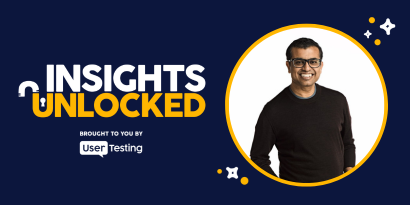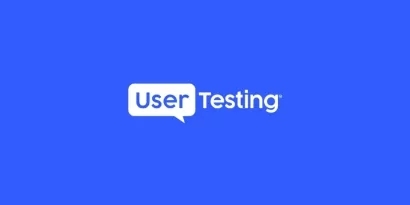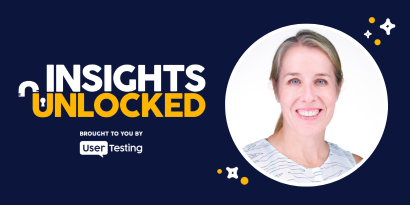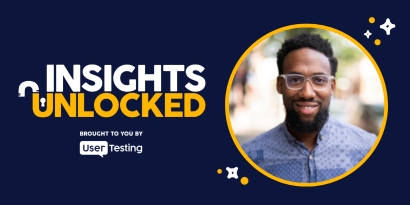
Episode 56 | September 06, 2022
How digital accessibility unlocks better UX for everyone
Discover how Amy Deschenes of Harvard Library makes digital accessibility a win for all, improving UX design and usability across the board.
How digital accessibility unlocks better UX for everyone
What if your product was unintentionally leaving millions of people behind? That’s the stark reality for organizations overlooking digital accessibility—and it’s a gap that can cost more than just user trust.
In a recent Insights Unlocked episode, Amy Deschenes, Head of UX & Digital Accessibility for Harvard Library, shared why designing with accessibility in mind doesn’t just help a subset of users—it improves the digital experience for everyone. As Amy put it, “Whenever you make something more accessible… it's going to enhance the overall usability of your product.”
Why digital accessibility is good business
Digital accessibility is often framed as a compliance issue. But Amy flips that narrative, emphasizing its strategic and business value. For instance, her team recently conducted an accessibility audit of 14 digital systems within Harvard Library, uncovering common but significant issues like poor magnification functionality and misuse of ARIA tags.
Fixing these issues wasn’t just about checking boxes—it directly improved how usable and enjoyable those tools were for all users. Amy reminds us that “you want to be able to reach the largest audience possible. You can't do that if you're leaving out people with disabilities.”
She also highlighted the growing number of organizations, including Harvard, that now factor accessibility into procurement decisions. This means that digital products lacking accessibility considerations may not even make it through the purchasing process.
GUIDE
The executive's guide to empathy-driven ROI
Empathy as a design tool
Accessibility is fundamentally about empathy—and it starts with experience. Amy encourages teams to build that empathy by using the very tools their users rely on:
- Try navigating your site with a screen reader
- Unplug your mouse for a day and use only keyboard navigation
- Watch real users with disabilities interacting with your product
This hands-on approach helps designers and developers understand the cognitive load and challenges users face. As Amy says, “You shouldn't have to work any harder just because you're choosing a different mode of input.”
Best practices from the accessibility audit
Amy’s team didn’t just identify problems—they shared actionable solutions. They provided:
- A spreadsheet of accessibility issues tailored for developers
- Simplified best practices for content creators
- A prioritization framework using high, medium, and low impact ratings
- Manual testing protocols for areas automated checkers miss, such as video captions and alt text accuracy
Crucially, most of the audit team had never conducted accessibility testing before. With some basic training, they were able to contribute effectively. This reinforces a powerful point: accessibility isn’t an elite skill—it’s a mindset that any team can adopt.
Designing for the future
With global populations aging and reliance on digital technology only increasing, the need for accessible user experiences will only grow. Amy urges teams to integrate accessibility into their standard UX and product development workflows rather than treat it as an afterthought.
“Just include the people who have disabilities… in your typical research process,” she says. “Challenge yourself to make sure you're not just aiming for the average user.”
That’s not just good UX design—it’s better for business, too.
Episode links:
- Designing for diverse audiences: This webinar explores strategies for crafting inclusive user experiences that address the needs of diverse audiences, emphasizing the significance of inclusivity in UX design and methods for gathering user feedback from underrepresented groups.
- The complete guide to usability testing: This comprehensive guide delves into the importance of usability testing, exploring different methods, and providing guidance on formulating the right usability testing questions to create inclusive and user-friendly experiences.
- Designing accessibility for everyone with Karen Hawkins: In this Insights Unlocked episode, Karen Hawkins discusses the critical importance of digital accessibility in design, highlighting common accessibility failures and the ease with which they can often be resolved.
- Accessibility testing: tips and best practices from industry leaders: This blog post offers practical advice and best practices for conducting accessibility evaluations, including remote moderated testing with users who have disabilities, to ensure inclusive digital experiences.
